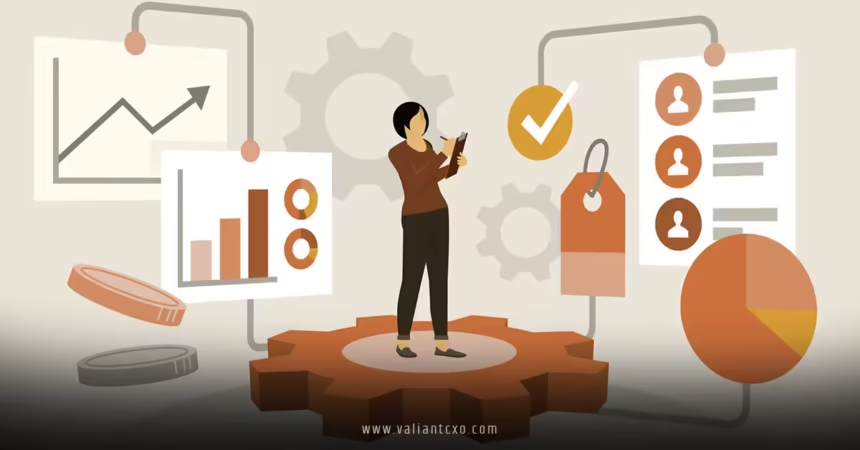Automation strategies for small business marketing tasks can feel like a lifeline tossed into the chaotic sea of running a company. If you’re a small business owner, you’re probably juggling a dozen hats—accountant, salesperson, customer service rep, and marketer, to name a few. Marketing, though, is one area where time and effort can quickly spiral out of control. From posting on social media to sending emails, the tasks pile up fast. But what if you could automate those repetitive chores and free up your brain for the big-picture stuff? That’s where automation strategies for small business marketing tasks come in, offering a way to streamline processes, save time, and still connect with your audience effectively.
In this article, we’ll dive deep into how automation can transform your marketing game. We’ll explore practical tools, strategies, and tips to help you work smarter, not harder. Whether you’re new to automation or looking to level up, these insights will guide you toward building a marketing machine that runs smoothly while you focus on growing your business.
Why Small Businesses Need Automation Strategies for Marketing
Running a small business is like trying to keep a dozen plates spinning at once. Marketing tasks—emails, social media, customer follow-ups—can eat up hours you don’t have. Automation strategies for small business marketing tasks are the secret weapon that lets you keep those plates spinning without breaking a sweat. By automating repetitive tasks, you save time, reduce errors, and create consistency in your brand’s voice. Plus, automation tools often come with analytics, so you can see what’s working and tweak your approach without guessing.
The beauty of automation? It’s like hiring a virtual assistant who never sleeps. It handles the grunt work, so you can focus on strategy, creativity, or even just grabbing a coffee without guilt. But where do you start, and how do you make sure you’re automating the right things? Let’s break it down.
The Benefits of Automating Marketing Tasks
Why bother with automation strategies for small business marketing tasks? For starters, they save you time—hours you can reinvest into product development or customer relationships. Automation also reduces human error. Ever sent an email with a typo to 1,000 subscribers? Automation tools can catch those mistakes before they hit inboxes. They also scale your efforts. What works for 100 customers can work for 10,000 without extra effort.
Consistency is another big win. Automation ensures your social media posts go out on schedule, your emails hit inboxes at the perfect time, and your customers get timely follow-ups. It’s like setting up a conveyor belt for your marketing—once it’s running, it keeps delivering.
Key Areas to Apply Automation Strategies for Small Business Marketing Tasks
Not every marketing task needs automation, but some are prime candidates. Let’s explore the areas where automation strategies for small business marketing tasks shine, from email campaigns to social media and beyond.
Email Marketing Automation
Email marketing is a powerhouse for small businesses, but crafting individual emails for every customer? That’s a nightmare. Automation strategies for small business marketing tasks make email marketing a breeze. Tools like Mailchimp or ActiveCampaign let you set up drip campaigns—sequences of emails triggered by specific actions, like a customer signing up or abandoning a cart.
Imagine a new customer joins your mailing list. An automated welcome series kicks in, introducing your brand, offering a discount, and sharing helpful tips. You set it up once, and it runs forever, nurturing leads while you sleep. You can also segment your audience—say, sending different emails to first-time buyers versus loyal customers—without lifting a finger.
Social Media Scheduling and Automation
Social media is a hungry beast, demanding fresh content daily. Automation strategies for small business marketing tasks can tame it. Tools like Buffer or Hootsuite let you schedule posts across platforms like Instagram, Twitter, and LinkedIn in advance. You can plan a month’s worth of content in one sitting, ensuring your brand stays active without you hovering over your phone all day.
Some tools even suggest optimal posting times based on when your audience is most engaged. Others, like Later, offer features to auto-publish Instagram Stories or Reels. It’s like having a social media manager who works 24/7 for a fraction of the cost.
Customer Relationship Management (CRM) Automation
Keeping track of customer interactions can feel like herding cats. Automation strategies for small business marketing tasks simplify this with CRM tools like HubSpot or Zoho CRM. These platforms automatically log customer interactions, track leads through the sales funnel, and send reminders for follow-ups.
For example, if a lead fills out a form on your website, a CRM can automatically tag them as a “hot lead,” send a personalized email, and alert your sales team. It’s like having a personal assistant who never forgets a detail, ensuring no opportunity slips through the cracks.
Content Creation and Distribution
Creating content is time-intensive, but automation can help here too. Tools like Canva Pro offer templates for quick social media graphics, while AI-driven platforms like Jasper can generate blog post outlines or ad copy. For distribution, automation strategies for small business marketing tasks include tools like Zapier, which connects apps to automate workflows. For instance, you can set up a zap to automatically share new blog posts to your social media channels or email list.
Think of it like a domino effect: one action triggers a chain of others, spreading your content far and wide without extra effort.
Choosing the Right Tools for Automation
With so many tools out there, picking the right ones for automation strategies for small business marketing tasks can feel overwhelming. The key is to match the tool to your needs and budget. Here’s how to choose wisely.
Evaluate Your Needs
Start by listing your most time-consuming marketing tasks. Is it social media posting? Email follow-ups? Lead tracking? Once you know your pain points, look for tools that address them. For example, if email marketing is your bottleneck, a tool like Constant Contact might be your best bet. If social media is the issue, try Sprout Social for advanced scheduling and analytics.
Consider Ease of Use
You’re not a tech wizard (or maybe you are, but who has the time?). Choose tools with intuitive interfaces and strong customer support. Many offer free trials, so you can test-drive them before committing. Automation strategies for small business marketing tasks should make your life easier, not add another learning curve.
Budget Wisely
Small businesses often operate on tight budgets, so prioritize tools with affordable plans. Many, like Mailchimp or Buffer, offer free tiers for basic needs. As your business grows, you can upgrade to premium features. Think of it as buying a car—you don’t need a Ferrari when a reliable sedan gets you where you’re going.
Best Practices for Implementing Automation Strategies
Automation strategies for small business marketing tasks aren’t a “set it and forget it” deal. To get the most out of them, follow these best practices.
Start Small
Don’t try to automate everything at once. Pick one area—like email marketing—and master it before moving on. Starting small lets you learn the ropes without overwhelming your team or budget. It’s like learning to cook one dish at a time before tackling a full-course meal.
Monitor and Optimize
Automation doesn’t mean autopilot. Regularly check your analytics to see what’s working. Are your automated emails getting opened? Are your social posts driving engagement? Use the data to tweak your campaigns. Tools like Google Analytics or platform-specific dashboards make this easy.
Personalize Where Possible
Automation can feel impersonal, but it doesn’t have to. Use customer data to personalize emails or social posts. For example, include a customer’s name in an email subject line or tailor content based on their purchase history. It’s like giving your customers a warm handshake instead of a cold form letter.
Stay Compliant
Automation strategies for small business marketing tasks must follow regulations like GDPR or CAN-SPAM. Ensure your email campaigns include unsubscribe options and that you’re transparent about data usage. It’s not just about avoiding fines—it’s about building trust with your audience.
Common Mistakes to Avoid
Even the best automation strategies for small business marketing tasks can go awry if you’re not careful. Here are some pitfalls to dodge.
Over-Automating
Automation is great, but don’t let it strip away your brand’s personality. If every email or post feels robotic, you’ll lose your audience’s trust. Balance automation with human touches, like personalized responses to customer inquiries.
Ignoring Analytics
Data is your friend. Ignoring it is like driving with your eyes closed. Regularly review your automation tools’ reports to see what’s working and what needs tweaking. If your open rates are low, maybe your subject lines need a refresh.
Choosing the Wrong Tools
Not every tool is right for every business. A complex CRM might be overkill for a solopreneur, while a basic scheduler might not cut it for a growing team. Research and test tools to find the perfect fit.
Real-World Examples of Automation in Action
Let’s make this real. Imagine you run a small bakery. You’re swamped baking cakes and serving customers, but marketing falls by the wayside. By implementing automation strategies for small business marketing tasks, you could:
- Set up a welcome email series for new subscribers, offering a coupon for their first purchase.
- Schedule social media posts showcasing your latest desserts, timed to post when your audience is online.
- Use a CRM to track customer birthdays and automatically send them a discount code for a free cupcake.
These small changes add up, turning casual customers into loyal fans without eating up your time.
The Future of Automation for Small Businesses
The world of automation is evolving fast. AI and machine learning are making tools smarter, predicting customer behavior, and personalizing content like never before. Automation strategies for small business marketing tasks will soon include advanced features like predictive analytics or voice-activated campaigns. Staying ahead means keeping an eye on trends and being ready to adapt. Check out resources like HubSpot’s blog for the latest insights on marketing automation trends.
Conclusion
Automation strategies for small business marketing tasks are like a trusty sidekick, handling the repetitive stuff so you can focus on what you love—running your business. From email campaigns to social media and CRM, automation saves time, boosts efficiency, and keeps your brand consistent. Start small, choose the right tools, and keep an eye on analytics to optimize your efforts. With the right approach, you’ll not only save time but also build stronger connections with your customers. Ready to take your marketing to the next level? Dive into automation and watch your small business soar.
FAQs
1. What are the best tools for automation strategies for small business marketing tasks?
Popular tools include Mailchimp for email marketing, Buffer for social media scheduling, and HubSpot for CRM automation. Choose based on your needs and budget.
2. How much time can automation strategies for small business marketing tasks save?
Depending on your tasks, automation can save hours weekly. For example, scheduling social posts or automating emails can cut down 5-10 hours of manual work.
3. Are automation strategies for small business marketing tasks expensive?
Many tools offer free or affordable plans. Start with free tiers from tools like Mailchimp or Hootsuite, then scale up as needed.
4. Can automation make marketing feel impersonal?
It can, but personalization features like using customer names or segmenting audiences help maintain a human touch in automated campaigns.
5. How do I know if my automation strategies for small business marketing tasks are working?
Check analytics like email open rates, social engagement, or lead conversion rates. Adjust based on what the data tells you.
Read Also:valiantcxo.com


